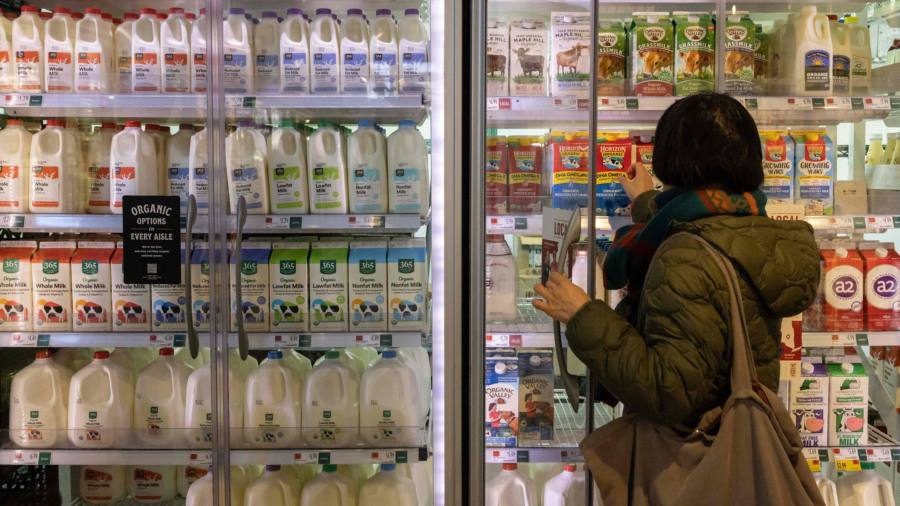The dollar weakened and Treasuries rallied on Tuesday ahead of the release of fresh US inflation numbers that are likely to dictate the future path of interest rates.
Global stock markets recorded modest gains early in the day. Europe’s region-wide Stoxx 600 added 0.4 per cent and London’s FTSE rose 0.5 per cent. Contracts tracking Wall Street’s blue-chip S&P 500 and those tracking the tech-heavy Nasdaq 100 rose 0.1 per cent ahead of the New York open.
A measure of the dollar’s strength against a basket of six peers slipped 0.3 per cent as bullish traders bet that slowing price growth would ease the pressure on central bank officials to keep tightening monetary policy. The yield on two-year and 10-year Treasuries fell 0.03 percentage points, to 4.5 per cent and 3.7 per cent respectively, as prices of the debt instruments rose.
The moves come as investors braced themselves for the US January consumer price index report, which is expected to show annual inflation at 6.2 per cent, down from 6.5 per cent the previous month, according to an economists’ forecast compiled by Bloomberg. US inflation peaked at 9.1 per cent in June. The data will be published at 8.30am US Eastern time.
Core inflation, which strips out volatile food and energy prices, is forecast to have risen 0.4 per cent month on month. Such a reading “should uproot at least some of the market complacency around the disinflationary process”, driving risk assets lower and expectations of the Federal Reserve’s terminal rate higher, said analysts at JPMorgan.
The Fed increased its benchmark interest rate by a quarter of a percentage point in February to its highest level since September 2007 but warned “ongoing increases” would be needed to bring inflation under control.
Though investors initially took comfort from Fed chair Jay Powell’s assertion that disinflation is under way, a report indicating the US labour market surged by half a million jobs in January has since undercut a stock market rally largely premised on the central bank pausing its rate rises later in the spring.
Pricing in the futures market shows investors now expect rates to peak slightly above 5 per cent in July, with only one interest rate cut by year-end. As recently as last week, they had been expecting a peak of about 5 per cent in May, with two interest rate cuts by the end of 2023.
In Asia, Hong Kong’s Hang Seng index fell 0.2 per cent and China’s CSI 300 was steady.
Prices for Brent crude, the international oil benchmark, fell 0.5 per cent to $86.14 a barrel.
Read the full article here



